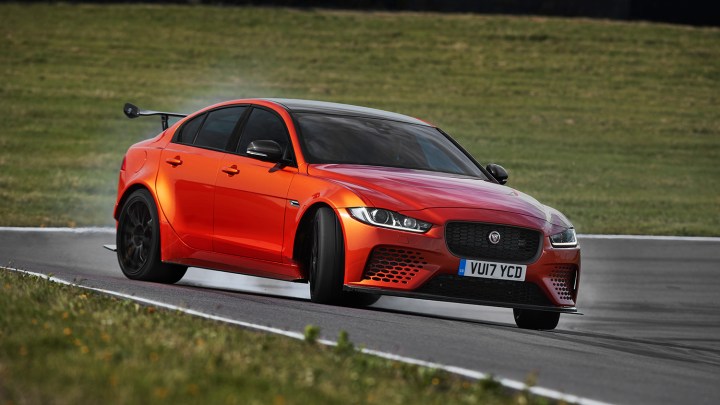
Check out the full lap video below:
Built by Jaguar Special Vehicle Operations (SVO), the XE SV Project 8 is a hand-built version of the XE compact luxury sedan. We really liked the standard XE when we drove it last year, but make no mistake, this is an entirely different animal. Instead of a 340-hp V6 between the front fenders, the Project 8 is powered by a 5.0-liter supercharged V8 that produces 592 hp and 516 pound-feet of torque. Put your paw down and the car will rocket to 60 mph in just 3.3 seconds, making it the fastest accelerating Jaguar yet. Me-ow. Oh, and it’ll do 200 mph.
“The SVO design and engineering team’s mission was to create the most track-focused road-legal Jaguar in history – not only the fastest, but also the most agile. ” said Mark Stanton, SVO Director. “This astonishing Nürburgring Nordschleife record validates the success of such extensive changes.”
By utilizing carbon fiber and composite components on everything from the front bumper to the rear wing, Jaguar’s SVO wizards kept the XE’s curb weight to 3,847 pounds. That is heavier than the regular XE, but when you account for the fire-breathing powerplant and other performance goodies onboard, it’s actually significantly lighter than it should be. Only the roof and front doors are carried-over from XE and 75 per cent of its mechanical hardware is new. Also consider the car still has a 10.2-inch touchscreen, a 380-watt Meridian sound system, and a variety of other modern luxuries.
In addition to all that, the Project 8 equips a recalibrated eight-speed automatic transmission, stiffer suspension springs, manually adjustable shocks, a carbon ceramic braking system, and an active electronic rear differential complete with an oil cooler. Just 300 examples of the vehicle will be produced globally, which means the car will be as rare as it is quick.
Want more of the Project 8? Be sure to read our one-on-one interview with SVO. Now somebody send the F-Pace to SVO and see what happens.


